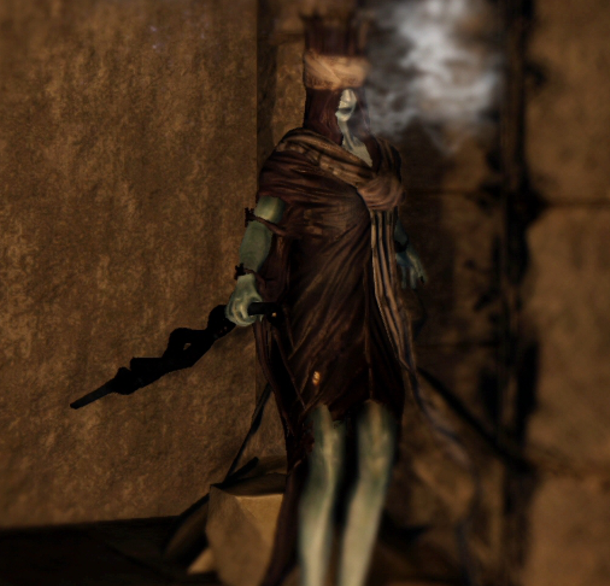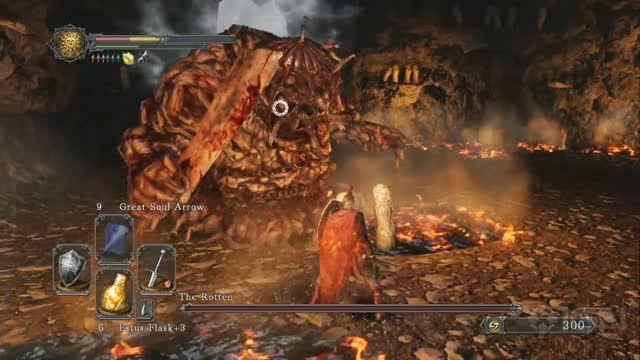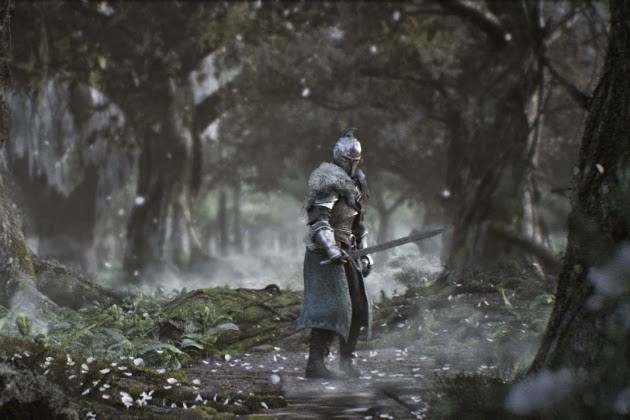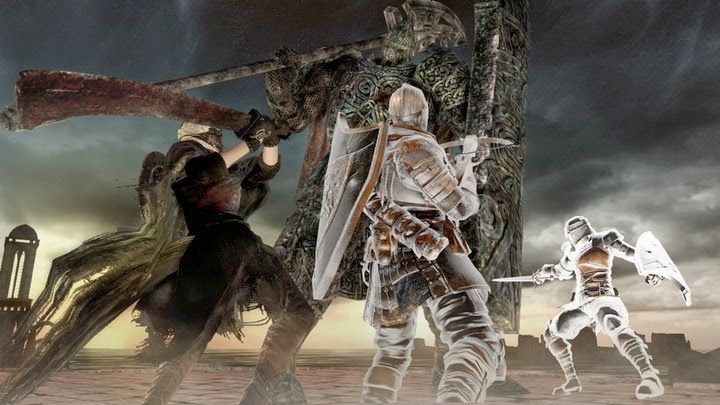May 9, 2014
In
Uncategorized
One of the many things I love about the Souls games is the organic way that quests emerge during a playthrough. There’s no quest system per se, but as you figure out your character build and playstyle, you will find yourself questing for items, spells and upgrades to complement how you are approaching a particular playthrough. This will lead to gaming session where you are not trying to complete a particular level, but rather find an item, or battle an enemy over and over in hopes of getting an item drop.
I have been playing a Hex build for my first time through Dark Souls II, and it’s been an interesting challenge. Because of the hybrid nature of the build (Faith/Int), you don’t really start to become powerful until later on in the game. Hexes require either a certain Faith score or a certain Int score, and certain hexes require different catalysts to cast. These factors are what led to the quest I was on last night–to get a Black Witch’s Staff from the Leydia Witches in Undead Crypt. The Black Witch’s Staff allows you to cast miracles, sorceries and hexes, meaning I would no longer need to switch between spell casting items during combat, and I would only need one equip slot for spell casting.
And so, I ventured back into the Undead Crypt, a very difficult area of the game that I’d completed recently, but needed to revisit, as it is the home of the Leydia Witches. The Leydia Witches are very cool from a lore standpoint. They worship the god of disease, and they can cast multiple forms of magic. They were once good, but abused their power and were killed, their spirits now forced to serve as guardians of the Crypt. From a gameplay standpoint, the witches are very powerful, casting spells that can make quick work of you if they land. When you kill them, there is a chance they will drop a Black witch’s Staff, but no guarantee.
So, my quest was to battle the witches in hopes of getting a staff. Luckily, there is a room not far from the first bonfire in the undead Crypt that houses three Leydia Witches. It also contains four Undead Prisoners, and is an absolute deathtrap if you don’t approach it carefully.
And this is what’s so great about Dark Souls II. This one room became a 45-minute quest for me. Because my character is a spellcaster, running into the room, dodging attacks and meleeing everyone was not an option. The witches are all lined across the far end of the room, and they begin casting Affinity (like homing magic missiles of death) as soon as you enter. Each time I battled them, I had to first lure out the four Undead prisoners and kill them so it was just me and the witches. I then actually had to run past them, dodging attacks along the way, and get to the room behind them to get better position. From there, I used Lightning Bolts and Soul Spears to take them out one by one.
Each run through that room took me about ten minutes, and it wasn’t until my fourth try that I finally got one of them to drop the staff I needed. It was worth it, though.
That’s just one example of the informal quest system that emerges while you play through a Souls game. There will be times where you make suicide runs into areas that are way to difficult, just to grab an item or weapon before dying. The hunt for items, weeapons and upgrades brings you back to areas you’ve already completed. And the type of items or weapons will depend on your build and style, so each playthrough will involve different quests.
This is just another aspect of the brilliant design of the Souls games, and the reason they are so replayable. Over seventy hours in, I’m still questing for odds and ends to perfect my build.
I love this game.
In the video below, you’ll see someone play through the room containing the three withches. This eprson had a much stronger bow than i do, and they smartly used a ranged approach with the witches. The Affinity spell they are casting is awesome, and the reason this person is not taking a lot more damage is beacuse they never take a full hit from one of an entire group of projectiles.








